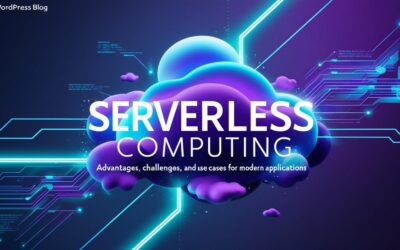The tech industry accounts for 2-4% of global carbon emissions—rivaling the aviation sector. As demand for digital services skyrockets, sustainable software development is no longer optional. Enter Green Coding, a movement prioritizing energy efficiency, reduced resource consumption, and carbon-aware practices. This post explores how developers and companies can slash software’s environmental footprint while maintaining performance.
The Environmental Cost of Software
From streaming videos to AI training, software guzzles energy. Consider these stats:
- Data centers consume 1% of global electricity (IEA, 2023).
- A single Google search emits 0.2g of CO₂, totaling 40kg annually per user (The Shift Project).
- Training a large AI model can emit 284 tons of CO₂—equal to five cars’ lifetime emissions (MIT).
Green Coding tackles this hidden impact by reimagining how software is designed, deployed, and maintained.
Energy-Efficient Algorithms: The Core of Green Coding
Optimize Code for Performance
Bloated code forces CPUs to work harder, wasting energy. For example:
- Search Algorithms: Binary search (O(log n)) uses 95% less energy than linear search (O(n)) for large datasets.
- Caching: Reducing database calls via caching can cut energy use by up to 30% (Microsoft Study).
Choose the Right Data Structures
Hash tables outperform arrays for frequent lookups, while linked lists save memory for dynamic data.
Case Study: Microsoft slashed Bing’s energy use by 30% by optimizing search algorithms and adopting energy-aware coding standards.
Cloud Optimization: Reducing Carbon Footprint at Scale
Right-Size Resources
Overprovisioned cloud servers waste energy. Tools like AWS Compute Optimizer or Google’s Carbon Sense Suite identify idle resources, reducing costs and emissions by up to 40%.
Embrace Serverless Architectures
Serverless platforms (e.g., AWS Lambda) auto-scale resources, eliminating idle server energy drain. Spotify reduced carbon emissions by 50% by migrating to serverless for backend tasks.
Carbon-Aware Programming: Coding with the Planet in Mind
Time-Shift Workloads
Schedule energy-intensive tasks (like backups) for times when grids use more renewables. Google’s Carbon Intelligent Computing shifts workloads to greener regions, cutting emissions by 10%.
Prioritize Renewable Energy Regions
Deploy servers in regions powered by wind/solar. Microsoft’s Azure Sustainability Calculator helps track this.
Tools for Developers
- Green Software Foundation’s Carbon Aware SDK
- Cloud Carbon Footprint for monitoring emissions
Key Takeaways and Practical Steps
What You Can Do Today
- Audit Code Efficiency: Use profilers (e.g., Pyroscope) to identify energy hogs.
- Adopt Green Cloud Practices: Right-size resources, leverage serverless, and choose renewable-powered providers.
- Build Carbon Awareness: Integrate emissions tracking into CI/CD pipelines.
The Future of Green Coding
By 2025, 60% of organizations will prioritize sustainability in software procurement (Gartner). Adopting Green Coding isn’t just ethical—it’s a competitive advantage.
Final Thoughts
Green Coding merges technical excellence with environmental stewardship. From optimizing algorithms to embracing carbon-aware tools, every line of code can drive change. Start small: refactor one inefficient function, switch to a greener cloud provider, or join the Green Software Foundation. Together, we can code a greener future.
Explore Further:
- Green Software Foundation
- AWS Well-Architected Sustainability Pillar
- Microsoft’s Sustainable Software Engineering Principles
Let’s build software that serves users—and the planet.


















